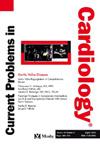Shifting trends and disparities in colorectal cancer and heart failure-related mortality in the United States: A two-decade retrospective analysis
IF 3.3
3区 医学
Q2 CARDIAC & CARDIOVASCULAR SYSTEMS
引用次数: 0
Abstract
Background
Colorectal cancer (CRC) and heart failure (HF) are significant contributors to morbidity and mortality, particularly when they co-occur. This study aims to analyze the trends in mortality related to both CRC and HF from 1999 to 2020, identifying demographic and geographical variations that could inform targeted interventions.
Methods
We examined death certificate data from the CDC WONDER database to assess trends in CRC and HF-related mortality over a 22-year period. We calculated annual percentage changes (APCs) in age-adjusted mortality rates (AAMRs), stratified by race, gender geographical region and age group.
Results
Between 1999 and 2020, there were 60,918 deaths attributed to CRC and HF. The AAMRs declined from 9.6 per 100,000 in 1999 to 0.92 in 2015, followed by an increase to 1.12 in 2020. Men consistently exhibited higher AAMRs (1.6) compared to women (1.07). By race, non-Hispanic Black individuals had the highest AAMRs (1.36), closely followed by non-Hispanic Whites (1.35), with Hispanic (0.69) and non-Hispanic Asian or Pacific Islander individuals (0.54) having lower rates. Geographical analysis revealed that the Midwest had the highest AAMR (1.53), with the Northeast (1.27), West (1.24), and South (1.16) following. Metropolitan areas recorded higher AAMRs (1.69) compared to non-metropolitan areas (1.19).
Conclusion
The study indicates a worrying rise in CRC and HF-related mortality from 2015 to 2020, following earlier declines. This upward trend across diverse demographics and regions highlights an urgent need for targeted public health strategies and healthcare policies to address these increases.
美国结直肠癌和心力衰竭相关死亡率的变化趋势和差异:20年回顾性分析
背景:结直肠癌(CRC)和心力衰竭(HF)是导致发病率和死亡率的重要因素,特别是当它们同时发生时。本研究旨在分析1999年至2020年与CRC和HF相关的死亡率趋势,确定可能为有针对性干预提供信息的人口和地理变化。方法:我们检查了来自CDC WONDER数据库的死亡证明数据,以评估22年来CRC和hf相关死亡率的趋势。我们计算了按种族、性别、地理区域和年龄组分层的年龄调整死亡率(AAMRs)的年百分比变化(APCs)。结果:1999年至2020年间,有60,918例死亡归因于结直肠癌和心衰。从1999年的9.6 / 10万下降到2015年的0.92 / 10万,到2020年上升到1.12 / 10万。男性的aamr始终高于女性(1.07)(1.6)。从种族来看,非西班牙裔黑人的aamr最高(1.36),其次是非西班牙裔白人(1.35),西班牙裔(0.69)和非西班牙裔亚裔或太平洋岛民(0.54)的aamr较低。从地域分析来看,中西部地区的AAMR最高(1.53),其次是东北部(1.27)、西部(1.24)、南部(1.16)。首都圈的aamr(1.69)高于非首都圈(1.19)。结论:该研究表明,在2015年至2020年期间,CRC和hf相关死亡率出现了令人担忧的上升,此前曾有所下降。这一上升趋势在不同人口结构和区域突出表明,迫切需要有针对性的公共卫生战略和保健政策来应对这些增长。
本文章由计算机程序翻译,如有差异,请以英文原文为准。
求助全文
约1分钟内获得全文
求助全文
来源期刊

Current Problems in Cardiology
医学-心血管系统
CiteScore
4.80
自引率
2.40%
发文量
392
审稿时长
6 days
期刊介绍:
Under the editorial leadership of noted cardiologist Dr. Hector O. Ventura, Current Problems in Cardiology provides focused, comprehensive coverage of important clinical topics in cardiology. Each monthly issues, addresses a selected clinical problem or condition, including pathophysiology, invasive and noninvasive diagnosis, drug therapy, surgical management, and rehabilitation; or explores the clinical applications of a diagnostic modality or a particular category of drugs. Critical commentary from the distinguished editorial board accompanies each monograph, providing readers with additional insights. An extensive bibliography in each issue saves hours of library research.
 求助内容:
求助内容: 应助结果提醒方式:
应助结果提醒方式:


